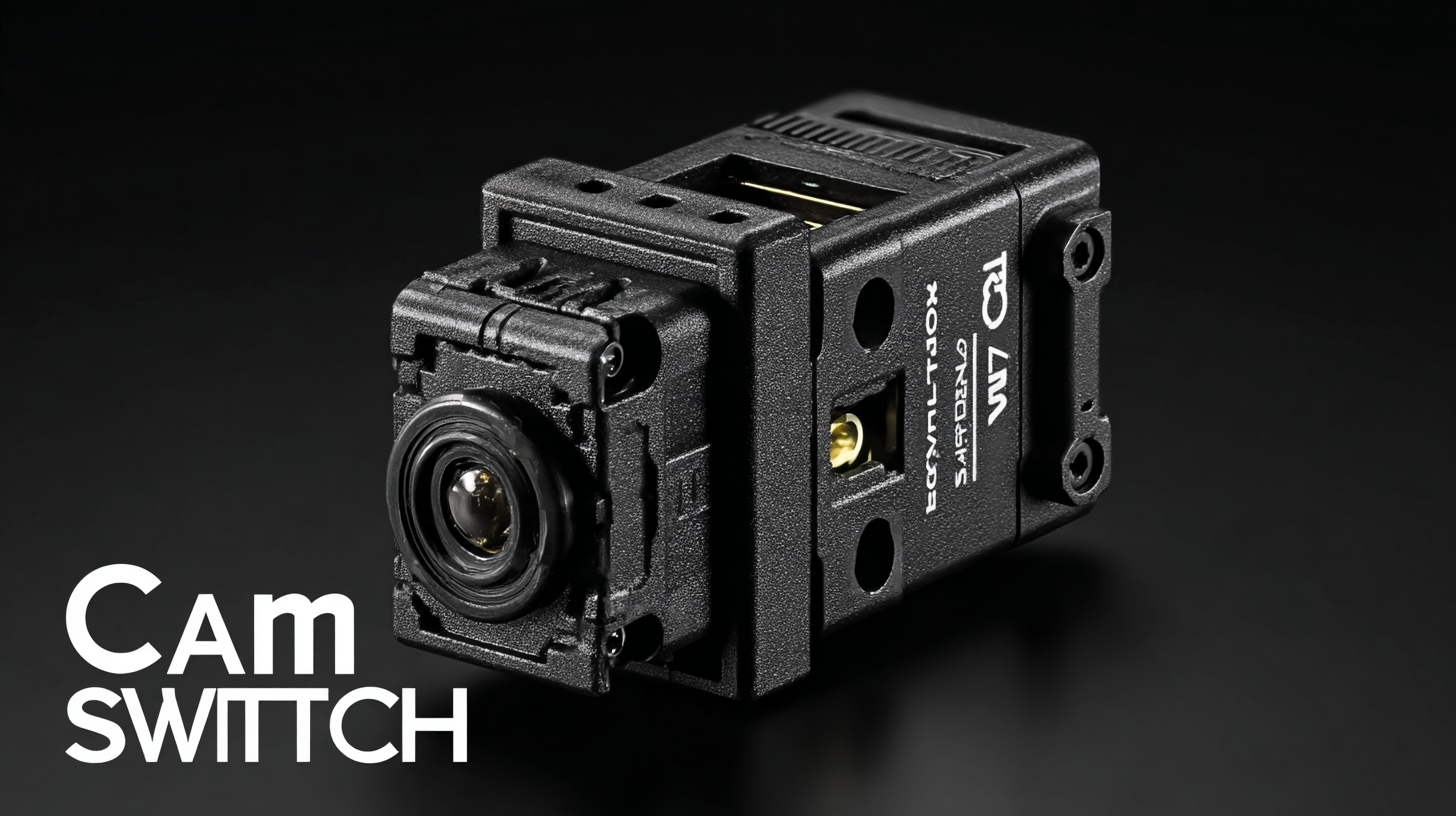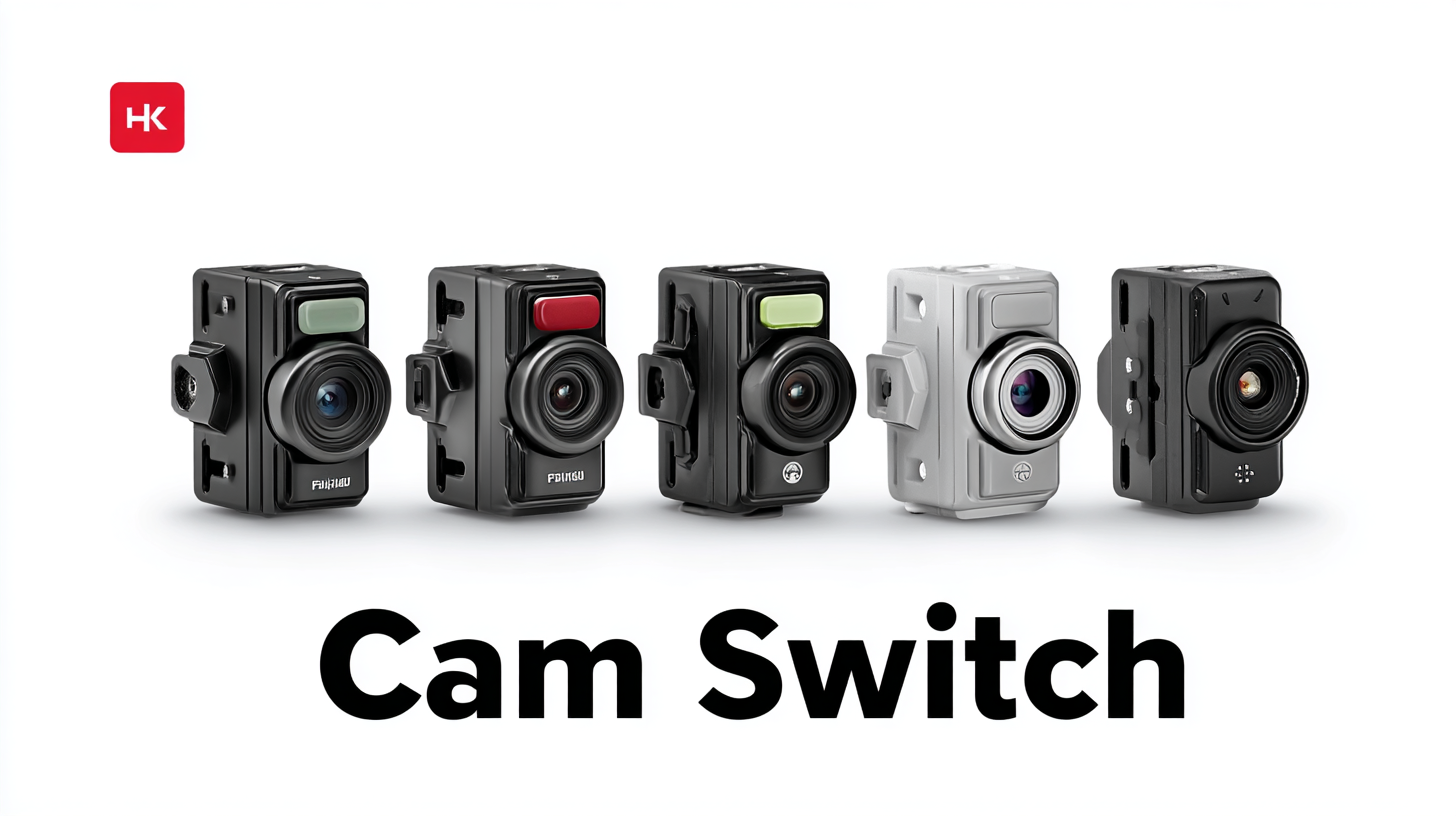
Ultimate Guide to Selecting the Best Cam Switch for Your Needs
Choosing the right Cam Switch can be a daunting task, especially given the multitude of options available on the market today. In this ultimate guide, we’ll explore the common problems associated with various types of cam switches, including their reliability, performance, and compatibility with different applications. Whether you are a seasoned electrical engineer or a DIY enthusiast, understanding these challenges is crucial for making an informed decision.

From mechanical wear and contact degradation to issues with improper installation and use in unsuitable environments, we will delve into how these problems can impact the functionality of your electrical systems. By the end of this guide, you’ll be equipped with the knowledge needed to select the best Cam Switch tailored to your specific needs, ensuring optimal performance and longevity.
Understanding Cam Switch Types and Their Industrial Applications
When it comes to selecting a cam switch, understanding the various types available is crucial to meet specific industrial applications. Cam switches are versatile devices used to manage electrical circuits, and their configurations can significantly influence functionality. The most common types include rotary cam switches, which are ideal for modifying the circuit configuration without losing power; these are often utilized in control panels for machinery. Another type is the key-operated cam switch, which enhances security by restricting access to authorized personnel only, making it suitable for critical applications in the manufacturing sector.
In addition to their types, the industrial applications of cam switches vary widely. For instance, in automation systems, cam switches facilitate the control of multiple machines simultaneously, ensuring efficient operation. Meanwhile, in the lighting industry, they help manage complex wiring setups, allowing for seamless switching between circuits. Understanding these applications can guide users in selecting the appropriate cam switch that not only fits their operational needs but also enhances safety and efficiency in their industrial environments.
Ultimate Guide to Selecting the Best Cam Switch for Your Needs - Understanding Cam Switch Types and Their Industrial Applications
| Cam Switch Type | Common Applications | Rated Voltage | Number of Positions | Material |
|---|---|---|---|---|
| Single Pole Cam Switch | Lighting Controls, Simple Motor Controls | 250V AC | 2-6 Positions | Plastic |
| Double Pole Cam Switch | Heavy Machinery, HVAC systems | 400V AC | 2-4 Positions | Die-cast Aluminum |
| Multi-Pole Cam Switch | Industrial Automation, Equipment Control | 690V AC | 4-12 Positions | Glass-filled Nylon |
| Cam Switch with Indicator | Control Panels, Safety Circuits | 230V AC | 2-8 Positions | Polycarbonate |
| Rotary Cam Switch | Electric Vehicles, Renewable Energy Systems | 600V AC | 3-10 Positions | Metal |
Key Factors to Consider When Selecting the Right Cam Switch
When selecting the right cam switch for your needs, several key factors must be carefully considered to ensure optimal functionality and safety. First and foremost, the electrical specifications of the cam switch should align with your application requirements. This includes voltage rating, current capacity, and the type of load—be it resistive, inductive, or capacitive. Choosing a switch that can handle the electrical demand without risk of overheating or failure is crucial.
Additionally, the physical size and design of the cam switch play a significant role in its selection process. The switch should fit seamlessly into your existing panel layout and allow for easy access and operation. Considerations such as terminal configuration, mounting style, and weather resistance could also impact your choice, particularly in environments where durability is essential. By evaluating these factors, you can confidently select a cam switch that meets both your operational needs and reliability standards.
Common Challenges Faced with Different Cam Switch Types
When selecting a cam switch, understanding the common challenges associated with each type is crucial for making an informed decision. Different cam switch types cater to various applications and environments, but they also present unique sets of problems. For instance, mechanical cam switches are known for their robustness and longevity, yet they often face issues related to wear and tear, especially in high-cycle applications. According to a recent industry report by a leading automation association, nearly 30% of operators reported signal inconsistency and failure in older mechanical models due to contact degradation.
On the other hand, electronic cam switches, while offering modern features such as programmability and remote control, can present challenges in terms of compatibility with existing systems. Many users experience difficulties integrating these advanced switches into legacy systems, leading to potential downtime or compromised functionality. Research indicates that up to 40% of installations fail to meet operational expectations when switching from mechanical to electronic options without adequate compatibility assessments and planning. Therefore, understanding these challenges is key to ensuring that the selected cam switch meets both performance and operational needs effectively.

Case Studies: Successful Cam Switch Applications in Various Industries
In various industries, the successful implementation of cam switches has demonstrated their vital role in enhancing operational efficiency and reliability. For instance, in the renewable energy sector, particularly in hybrid systems that integrate solar and wind energy, the use of cam switches allows for seamless transitions between power sources while ensuring system integrity. According to recent industry reports, the global hybrid renewable energy market is expected to grow significantly, projected to reach $50 billion by 2030, underscoring the increasing reliance on such technologies.
In manufacturing, cam switches provide robust solutions for handling large-scale automation processes. One exemplary case study is from an established manufacturing facility that utilized cam switches for their machinery control systems, resulting in a 20% increase in productivity and a 15% reduction in operational downtime. These applications highlight how the strategic selection of cam switches can lead to enhanced performance, ultimately driving innovation across sectors.
Cam Switch Applications in Various Industries
Industry Data Insights: Impact of Choosing the Right Cam Switch on Operational Efficiency
When selecting the right cam switch for operational efficiency, it is crucial to consider how this decision impacts overall performance. The right cam switch can streamline processes, reduce downtime, and enhance the reliability of operations. As industries increasingly demand higher productivity, the choice of switch becomes a pivotal factor in achieving operational excellence. It’s not just about functionality; the appropriate cam switch can significantly influence the efficiency of workflows and the safety of equipment.
In the context of emerging trends, industry data suggests a direct correlation between the selection of quality cam switches and reduced operational disruptions. As reported, the global disconnect switches market is projected to rise significantly, reflecting an increasing reliance on high-quality electrical components across various sectors. Furthermore, the ongoing evolution within industries, such as the shift towards more automated and integrated solutions, makes it essential for businesses to invest in the right cam switches. By prioritizing this element, organizations can ensure they are navigating the complexities of modern operations with agility and resilience, ultimately contributing to better performance outcomes.

